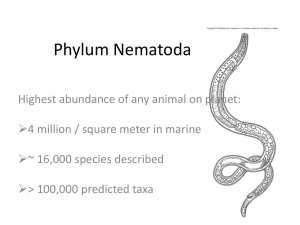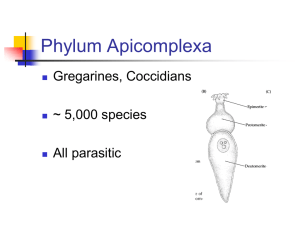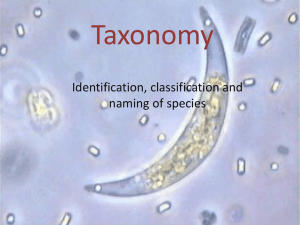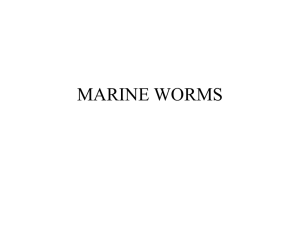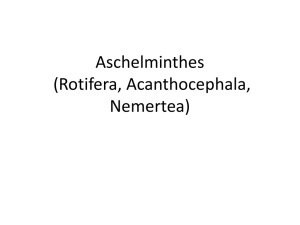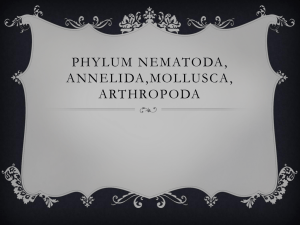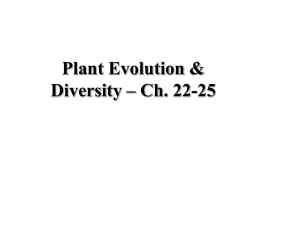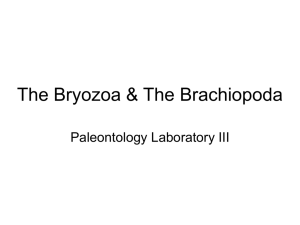Lophophorates
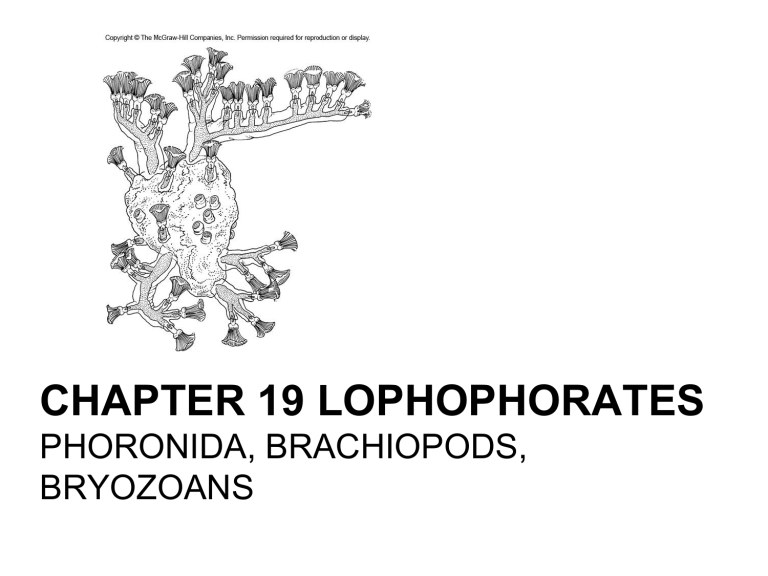
CHAPTER 19 LOPHOPHORATES
PHORONIDA, BRACHIOPODS,
BRYOZOANS
Phylum Phoronida
Marine organisms that live in sediments
Phoronida characters
•Filter feeding
•Do not move
•Cilia create current to bring particles to tentacles; then to mouth
•Metanephridia
•Blood vessel contains blood (w/ hemoglobin)
Phoronida
• Hermaphroditic
• Sperm released from nephridia, collected by other individual
• Embryo = actinotroch
Phylum Brachiopoda
• = “arm foot”
• 2-valve shell
• Marine lophophorates
Phylum Brachiopoda characters
• At poles or deep marine, permanently attached to substrate
• Metanephridia
• Circulatory system w/heart and contractile vessels - no blood pigment
Brachiopoda
• Sperm, eggs discharged from nephridiopores
• Fert external
Phylum Bryozoa
• Moss animals
• Colonial animals that attach to substrate
• Marine (5000 species) and freshwater (50)
• Fossils (15,000)
Bryozoa
• Secrete a covering around body
• Asexual repro, hermaphroditic
Bryozoa
•Sperm into coelomic cavity, released from openings in tentacles
•Neighbors collect sperm for fert.
•Some brood embryos
Digestion
• Phoronids, bryozoans:
U-shaped
• Brachiopods: U-shaped oneway tract
Nervous systems
• Ring at base of lophophore, around esophagus, or by pharynx
• Mechanoreceptors and chemoreceptors scattered
